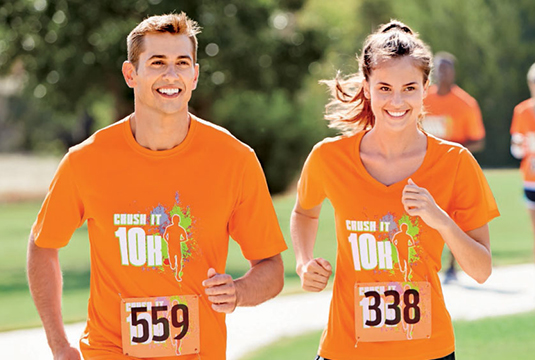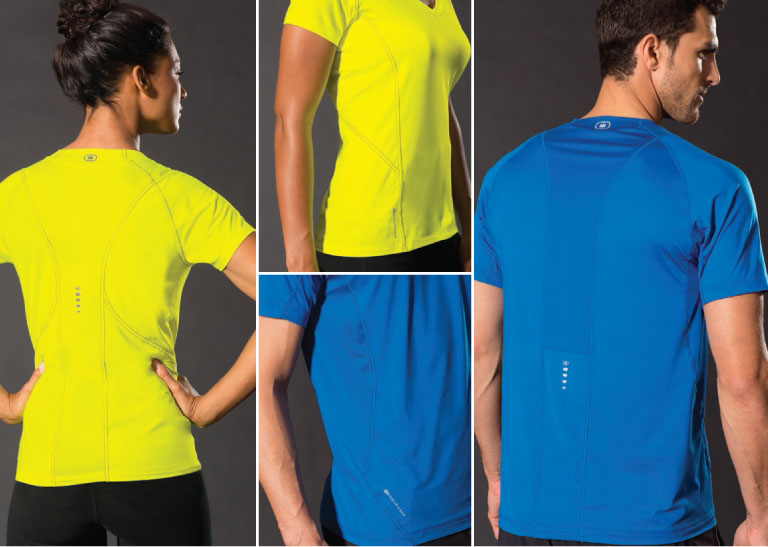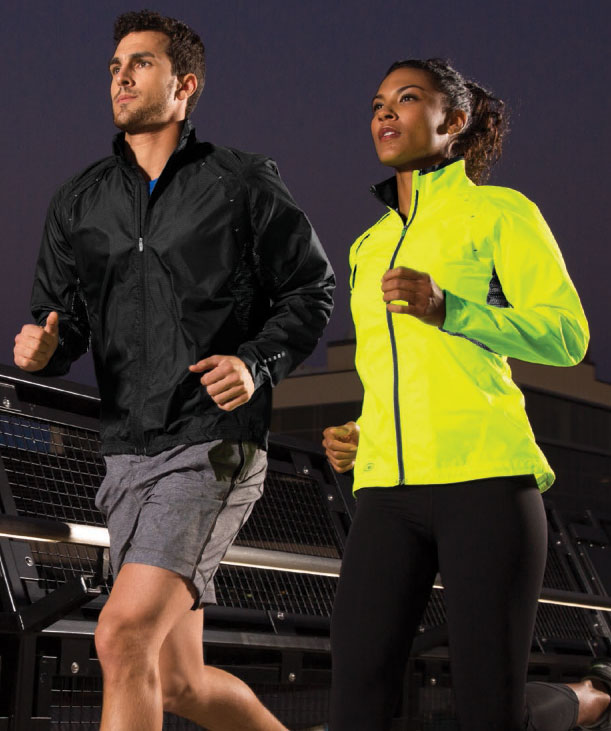
Last updated on December 1st, 2021 at 07:49 pm
Athletes want to be properly equipped and dressed to perform their sport. Gym owners, marathon race directors, school athletics directors are now looking for branded performance apparel rather than cotton t-shirts for their customers and athletes to properly represent them at events.
With its inherent lightness and moisture-wicking capabilities, polyester in a wide variety of fabric types – jerseys, piques, warp knits, compression stretch, interlock, ribs, meshes etc. It is the primary choice in fabrics for a base layer needed for training and competition.
There is no one type of fabric that works for every sport, but all athletes train, compete and want to wear apparel that enhances that experience.
What are some example of performance fabrics?
Polyester – the popular choice and defacto standard in performance wear. Nylon is used in warm up jackets because of its robust wind resistance capabilities. Spandex is often blended in small amounts to offer stretch and compression.
Here are some general properties of the fabrics, generally one type of fabric will offer several properties but not all:


Antibacterial / Antimicrobial: A fabric that has been chemically treated with antibacterial agent. It makes the finished fiber or fabric resistant to, or inhibits the growth of, microorganism.
Bodymapping: The strategic placement of component materials in garment design and construction to provide the best possible movement and balance to enhance stamina or reduce fatigue for the weather.
Compression fabric: A high-tenacity stretch fabric which (when in close fitting garment) provides muscles with a firm compression fit that lessens vibrations, reduces fatigue and keeps muscles energized. The fabric is usually made in a knit construction, using a series of gradient fibers with an open-knit inner surface to create a moisture-transfer environment.
Thermoregulation: The ability to maintain a constant temperature regardless of changing environment conditions.
Wickability: The ability of a fiber or a fabric to disperse moisture and allow it to pass through to the surface of the fabric so that evaporation can take place.
Active garments come in different weights and layers, including base, mid and outer layering pieces, such as T-shirts, quarter-zip pullovers and more. Each layer will perform a different function. When shopping for performance apparel be sure to consider the climate and the layers that are required.
Contact us today to find out how we can help to outfit your event, gym or sports team!